Essential Insights into Townhouse Dryer Vent Cleaning
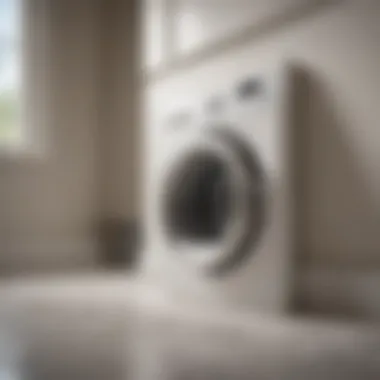
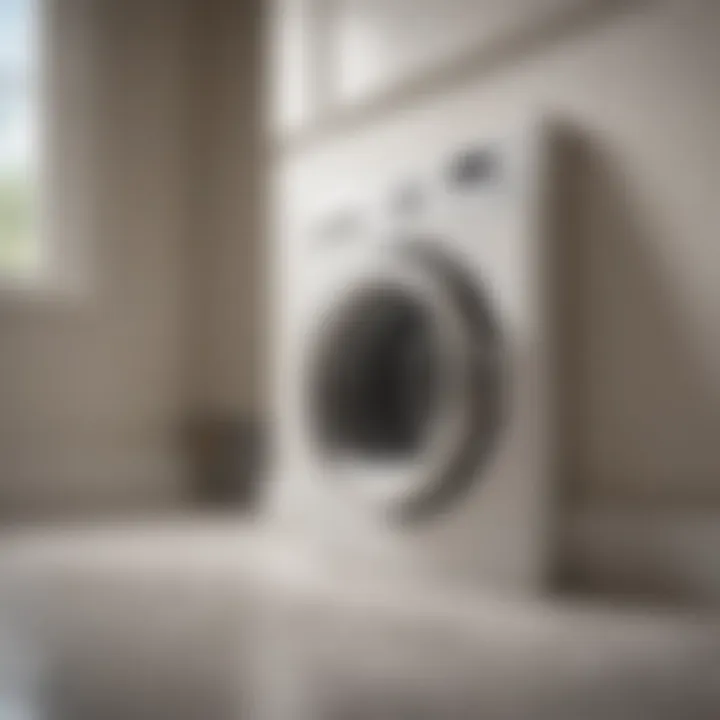
Intro
Maintaining the efficiency and safety of your townhouse is crucial. One area often overlooked is the dryer vent. Many homeowners do not realize that a clogged or dirty dryer vent can pose serious risks, including fire hazards and decreased energy efficiency. This article delves into the essential practices for townhouse dryer vent cleaning, highlighting why it matters and how it can enhance indoor air quality.
Understanding the intricacies of dryer vent maintenance is key. Regular cleaning not only prolongs appliance lifespan, but also ensures that your home remains a safe environment. This guide aims to equip homeowners with the knowledge needed to address common issues, implement effective cleaning procedures, and adopt best practices for ongoing maintenance. By investing time in dryer vent care, you contribute to a healthier living space and better appliance performance.
Importance of Dryer Vent Cleaning
Cleaning dryer vents serves multiple purposes. Here are some vital reasons:
- Fire Safety: Lint buildup is highly flammable and can ignite with excessive heat from the dryer.
- Energy Efficiency: A clean vent allows your dryer to operate more efficiently, potentially saving money on energy bills.
- Indoor Air Quality: Proper ventilation prevents mold and bacteria growth caused by trapped moisture.
Neglecting dryer vent maintenance poses risks that can escalate quickly. Homeowners should prioritize regular inspections and cleanings to mitigate hazards.
"Regular maintenance of dryer vents is vital for safety and efficiency. Neglect leads to serious risks."
Common Issues Due to Negligence
When dryer vents are not cleaned, several issues may arise:
- Longer Drying Times: Clothes take longer to dry, resulting in higher energy consumption.
- Unpleasant Odors: Musty smells may emerge from lint and moisture buildup.
- Increased Risk of Fire: This is perhaps the most serious consequence of neglect.
- Damaged Dryer: Overworking the appliance can lead to breakdowns, necessitating costly repairs.
Awareness of these problems encourages timely action. Homeowners can routinely check their vents and schedules cleanings to alleviate issues before they manifest.
Effective Cleaning Procedures
Cleaning dryer vents involves several steps for best results.
- Safety First: Unplug the dryer and move it away from the wall.
- Remove Vent Hose: Detach the vent hose from the dryer.
- Clean the Vent: Use a vent brush or vacuum attachment to remove lint and debris from the duct.
- Inspect Ventilation Outside: Ensure the external vent is clear and functioning properly.
- Reattach Everything: After cleaning, reattach the vent hose securely and plug in the dryer.
Utilizing professional services can also be beneficial, especially in certain situations where buildup is significant or access to vents is limited.
Best Practices for Ongoing Maintenance
To ensure long-lasting performance and safety, incorporate the following best practices:
- Schedule Regular Cleanings: At least once a year is recommended.
- Monitor Drying Performance: If clothes are not drying well, inspect your dryer vent immediately.
- Use Lint Traps: Always clean lint traps after each use to minimize vent buildup.
- Consider Upgrading: Invest in high-efficiency dryers and quality venting systems.
By following these steps and adopting a proactive approach, you ensure the safety and efficiency of your townhouse's dryer system.
Preface to Dryer Vent Cleaning
Maintaining a clean dryer vent is critical for the safety and efficiency of any household. This is especially true for townhouses, where shared venting systems can pose unique challenges. This section will focus on why understanding dryer vent cleaning is essential for homeowners.
Dryer vents carry hot air and lint from the dryer to the outside. If not maintained, these vents can become clogged with lint, which can cause overheating and, in extreme cases, fires. The risk is compounded in townhouse settings, where vents may be connected to multiple units. This concentration of lint can further increase the danger.
Clean dryer vents not only reduce fire hazards but also improve the efficiency of the dryer. A dirty vent forces the dryer to work harder, using more energy and leading to higher utility bills. Regular cleaning can enhance drying performance and prolong the life of the appliance.
Educating homeowners about the cleaning process, tools needed, and signs of trouble is vital. This knowledge empowers residents to take action before they face significant issues. By understanding the importance of dryer vent cleaning, townhouse owners can ensure a safer and more efficient environment.
Understanding Dryer Vents
Dryer vents are essential parts of a dryer system. They are designed to transport exhaust air outside, allowing the dryer to function effectively. Vents are usually made from metal or flexible plastic and should be as short and straight as possible for optimal airflow.
Most townhouses share ventilation systems, which makes understanding the layout even more critical. Knowing how your particular vent system is organized can help in identifying potential issues, such as blockages or leaks. Moreover, different townhouse designs may necessitate different cleaning approaches.
The Purpose of Cleaning
Cleaning dryer vents serves multiple important purposes.
- Fire Prevention: Accumulated lint is highly flammable. Regular cleaning significantly lowers the risk of vent fires.
- Energy Efficiency: A clean vent promotes better airflow, which decreases the time needed for drying clothes and ultimately saves money on utility bills.
- Extended Equipment Life: Regular maintenance can help in extending the appliance's lifespan by reducing wear and tear.
- Improved Air Quality: Clogged vents can release dust, allergens, and other pollutants back into your home, negatively affecting indoor air quality.
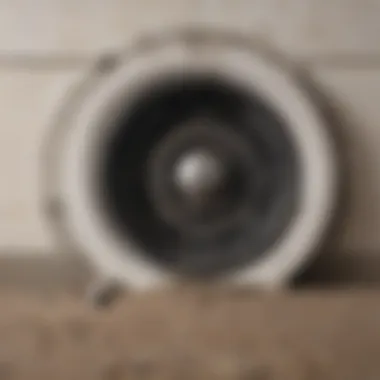
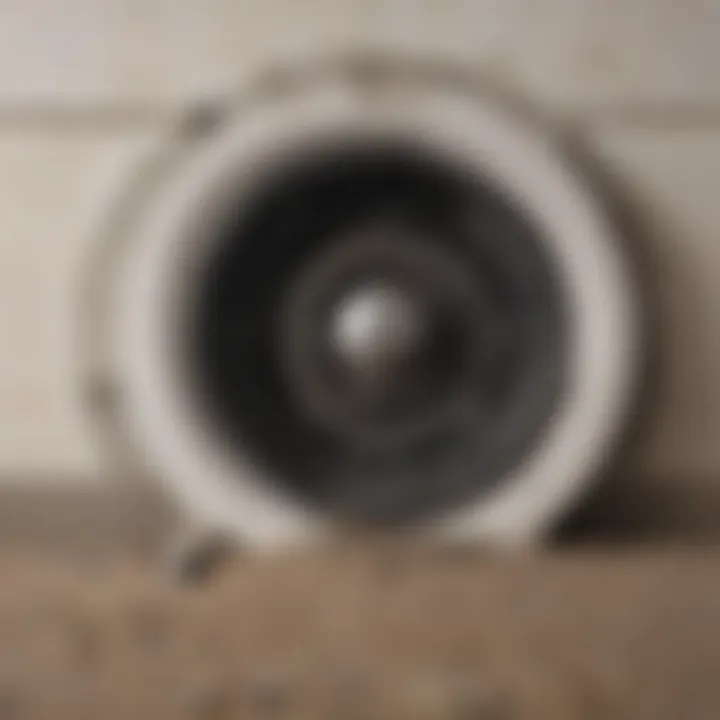
Given these points, the importance of dryer vent cleaning becomes quite clear. It is not merely a nuisance, but a vital component of townhouse maintenance that affects safety, efficiency, and overall well-being.
Why Townhouse Specific Considerations Matter
In the context of townhouse living, dryer vent cleaning assumes heightened significance. The design and structural characteristics of townhouses lead to unique venting challenges. Building regulations and shared vent systems create distinct scenarios that necessitate specialized awareness and proactive management for residents. Ignoring these elements can lead to severe repercussions, including fire hazards and deteriorated indoor air quality.
The integration of multiple units often means shared exhaust pathways. This can amplify issues related to clogs or blockages. A single homeowner’s neglect can affect all residents in the townhouse complex. Therefore, engaging in regular cleaning and maintenance is non-negotiable for each unit owner.
Moreover, townhouse architecture frequently includes longer and more complex vent systems due to the shared walls and confined spaces. These systems may not function as efficiently as stand-alone units, making routine inspection and cleaning even more critical.
Consider these effects:
- Increased Risk of Fire: A buildup of lint is a leading cause of dryer fires. The hazard is compounded in townhouses, where shared walls can facilitate the rapid spread of flames.
- Health Implications: Blocked vents can cause laundry to take longer to dry, leading to excessive moisture accumulation. This, in turn, can cultivate mold and allergens, adversely affecting the health of residents.
Understanding these townhouse-specific considerations shapes the framework for effective dryer vent maintenance, prioritizing safety and efficiency for all occupants.
Vent System Design in Townhouses
The vent system design in townhouses can be intricate. It typically involves multiple bends and turns due to the proximity of units. These configurations often restrict airflow, leading to clogs. Established regulations govern the installation of dryer vents in townhouses, but adherence can vary. Homeowners must be diligent in ensuring that the design aligns with current standards.
Factors to consider:
- Material of Ducts: The type of material used in vent ducts significantly influences functionality. Rigid metal ducts are best because they facilitate optimal airflow compared to flexible plastic options.
- Duct Length and Bends: Longer ducts with excessive bends are harder for exhaust air to traverse. Each bend decreases efficiency and potentially traps lint more easily.
Proper initial construction is essential but so is ongoing upkeep. Inspecting the design regularly ensures that any deficit can be addressed before it leads to serious problems.
Common Venting Problems in Shared Spaces
Shared vent systems present unique issues not commonly encountered in single-unit dwellings. Among these are the pressure variations induced by multiple units operating simultaneously. Here are some prevalent problems:
- Lint Accumulation: As multiple dryers operate, there is a higher volume of lint entering the shared vent. This accumulation can quickly exceed safe limits.
- Inadequate Exhaust Pathways: Mismanagement of exhaust pathways can result in back pressure, promoting the stagnation of moist air and lint.
- Access Limitations: In townhouse complexes, access to venting systems may be restricted, complicating cleaning efforts.
Addressing these problems requires vigilance from all residents. Regular communication and cooperation among homeowners can facilitate coordinated cleaning efforts, reducing individual risk while promoting overall safety. The awareness of how shared systems operate is critical for effective maintenance.
Health Risks Associated with Clogged Vents
Understanding the health risks associated with clogged dryer vents is vital for townhouse residents. Neglecting dryer vent maintenance can lead to serious consequences that affect both safety and air quality. Due to the unique design of townhouse vent systems, these risks may be amplified. With interconnected units sharing ventilation, one household's negligence can impact others, making it essential to prioritize cleaning.
Fire Hazards
One of the most alarming risks tied to clogged dryer vents is the potential for fire hazards. Lint buildup is highly flammable, and when it accumulates in the vent, it can catch fire. The United States Fire Administration states that dryer vent fires account for thousands of incidents annually, making it one of the leading causes of home fires.
Some key points regarding fire hazards include:
- Lint Accumulation: Lint collects in the vent, reducing airflow. This creates friction and heat, both of which increase the risk of ignition.
- Ignoring Warning Signs: Homeowners must be vigilant about warning signs. If you notice your clothes are taking longer to dry or the dryer feels excessively hot, it can indicate a blockage.
- Shared Venting Systems: In townhouses, shared vents can lead to complications. If one unit neglects maintenance, it can create a combustible situation in another unit.
It is crucial to regularly check and maintain dryer vents to prevent these fire hazards.
Air Quality Concerns
Clogged dryer vents not only pose fire risks but also lead to poor indoor air quality. When vents are blocked, the dryer cannot expel air properly, causing humidity and pollutants to build up inside the home.
Consider the following impacts on air quality:
- Increased Humidity: An obstructed dryer vent can cause excess moisture, leading to mold growth. Mold spores can worsen allergies and respiratory issues, impacting residents' health.
- Retention of Allergens: Dust, lint, and other allergens can get trapped in the home's environment. This leads to increased allergic reactions, particularly in sensitive individuals.
- Carbon Monoxide Risks: If the dryer uses gas, a clogged vent can interfere with the exhaust. This increases the risk of carbon monoxide buildup, which is dangerous and requires immediate action.
In summary, maintaining clean dryer vents is crucial for ensuring safety and promoting good air quality in a townhouse setting. By addressing these concerns proactively, homeowners contribute to a healthier living environment.
Signs Your Dryer Vent Needs Cleaning
Understanding the signs that indicate your dryer vent needs cleaning is crucial for maintaining not only the efficiency of your appliance but also your home’s safety. Clogged dryer vents can lead to a multitude of problems, ranging from decreased appliance performance to serious health hazards. Being aware of these signs can help homeowners take timely action, ensuring optimal dryer functionality and indoor air quality.
Reduced Drying Efficiency
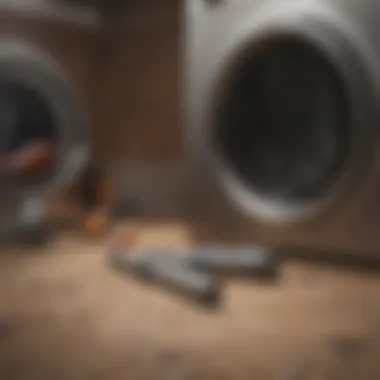
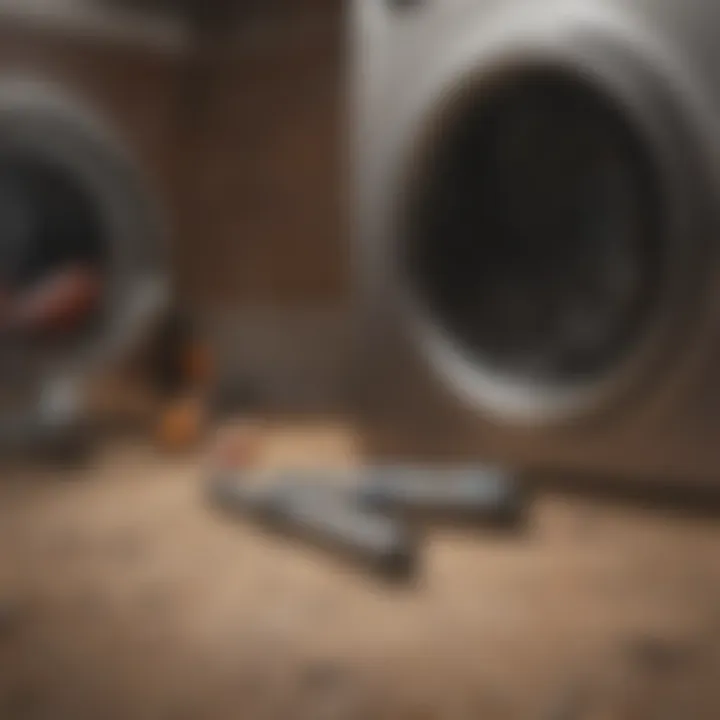
One of the first signs that your dryer vent may require cleaning is a noticeable decrease in drying efficiency. If your clothes come out of the dryer still damp or take longer than usual to dry, it could indicate lint build-up obstructing airflow. This situation occurs because the dryer has to work harder to push the air through the clogged vent, increasing energy consumption.
Regular maintenance of the vent can prevent this buildup, keeping your dryer operating efficiently. If homeowners notice this issue, it is advisable to inspect and clean the vent promptly.
Unpleasant Odors
Another indicator of a dirty dryer vent can be unpleasant odors emanating from the appliance. Lint and moisture can combine to create a musty smell, likely due to mold or mildew developing in the vent. This situation not only affects the comfort of your home but poses a significant health risk due to the reduced air quality.
Odors can also stem from overheating, in which lint accumulation restricts proper airflow, causing the dryer to overheat. It is important for homeowners to pay attention to this sign and take action as soon as unpleasant smells are detected.
Increased Drying Times
Finally, another clear sign that a dryer vent needs attention is an increase in drying times. If clothing is requiring multiple cycles to dry fully, this inefficiency hints at a blockage in the ventilation system. Increased drying times not only waste energy but also strain the dryer, which can eventually lead to premature breakdown.
Homeowners experiencing these symptoms should consider checking the vent for clogs. A simple cleaning procedure or professional assistance can restore the dryer’s performance and efficiency.
In summary, recognizing these signs is vital. Reduced drying efficiency, unpleasant odors, and increased drying times are all red flags. By addressing these concerns promptly, homeowners can maintain their appliances and ensure a safe indoor environment.
The Dryer Vent Cleaning Process
The process of cleaning dryer vents is critical in maintaining the safety and efficiency of home appliances. In townhouses, where vent systems often connect with multiple units, the implications of an obstructed vent can be significant. Moisture buildup, heat generated by the dryer, and the risk of fire hazards are just a few concerns when vents are neglected. Regular cleaning is essential not only for the performance of the dryer but also for reducing health risks associated with poor air quality.
Tools Required for Cleaning
To effectively clean dryer vents, a few specific tools are necessary. Here is a list of essential tools:
- Vent cleaning brush: This specialized brush is designed for removing lint and debris from the vent.
- Shop vacuum or blower: A powerful vacuum will assist in extracting loose debris.
- Screwdriver set: For disconnecting the dryer and removing vent sections.
- Flashlight: Useful for inspecting the vent system for blockages.
- Protective gloves and mask: To ensure safety during the cleaning task.
These tools combine to provide a thorough cleaning experience, enhancing the overall effectiveness of the process.
Step-by-Step Cleaning Guide
Disconnecting the Dryer
The act of disconnecting the dryer is an essential first step. This process not only prevents electrical hazards but also allows for full access to the vent. Utilizing a screwdriver, the connection between the dryer and duct can be safely undone. This is a beneficial choice because it ensures that all debris within the vent can be addressed. Furthermore, removing the dryer helps to avoid any lingering lint that could pose a fire risk if not properly managed.
Removing the Vent
Once the dryer is disconnected, the next action is removing the vent itself. This task involves unscrewing the vent from its attaching points. Proper removal contributes significantly to cleaning effectiveness, as it allows access to spaces that a brush alone cannot reach. However, it’s crucial to proceed with caution. If the vent is damaged during removal, it may lead to more complex issues down the line.
Cleaning Techniques
Effective cleaning techniques are pivotal in ensuring that the vent is thoroughly cleared of all debris. Primarily, using the vent cleaning brush allows for the removal of stuck lint. After brushing, using a shop vacuum can help extract the debris loosened from the walls of the vent. This step is regarded as beneficial because it enhances airflow and efficiency in the dryer. Caution is advised to avoid damaging the vent materials while brushing.
Reassembly
Reassembly involves carefully putting back together the dryer and the vent system. This part is essential as it ensures that everything is secured properly. After cleaning, all joints should be checked to ensure they are tight and secure, reducing the likelihood of airflow leaks or future blockages. This final step typically carries the advantage of maintaining the efficiency of the dryer as it operates in conjunction with the duct work.
Post-Cleaning Checks
Once cleaning is finished, conducting a few checks is essential to guarantee that the system operates well. After reassembling, turn the dryer on for a short duration and check for any unusual noises or smells. Inspect the outside vent flap to ensure it opens correctly during operation. These checks help confirm the integrity of the cleaning process and ensure everything is functioning as intended.
By following these comprehensive procedures, townhouse residents can maintain safe and efficient dryer operations, safeguarding their living spaces from fire hazards and other health concerns.
Professional vs. DIY Cleaning
Understanding when to engage professional services versus attempting a DIY approach is crucial for townhouse dryer vent cleaning. Many homeowners may consider cleaning their dryer vents on their own to save costs. However, there are specific situations where professional services are not just recommended but may be necessary.
When to Hire Professionals
It is wise to hire professionals in several scenarios. If there is evidence of extensive lint buildup or the vent system is excessively long or complex, a professional cleaning is advisable. Additionally, if the dryer is over six years old, it may not function as efficiently. A professional can identify underlying problems.
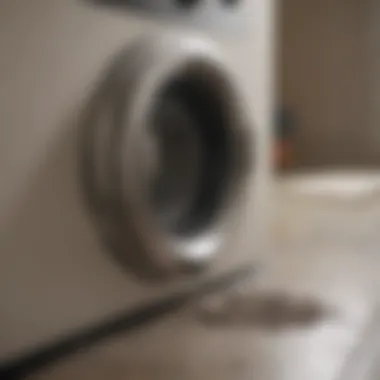
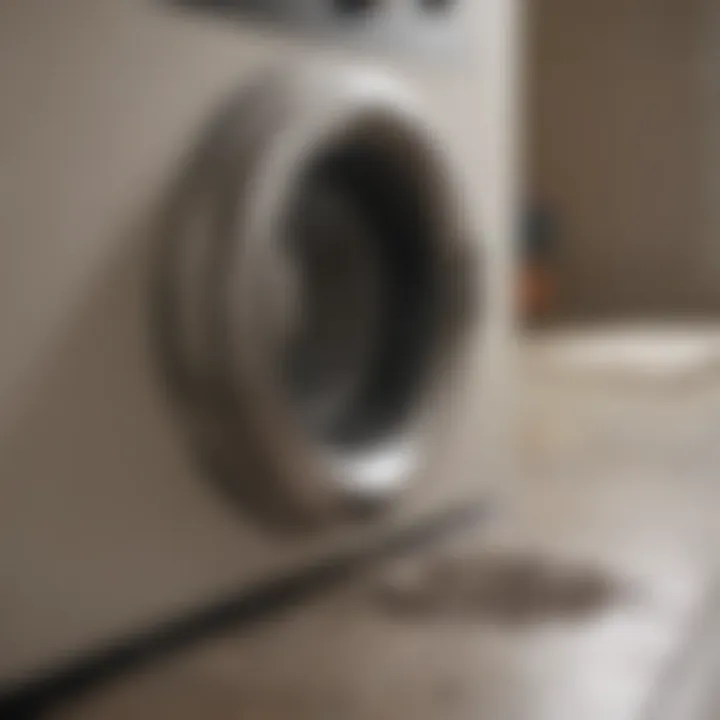
Other indicators include:
- Frequent lint blockages.
- Overheating of the dryer.
- Poor performance in drying clothes.
- An unpleasant smell emanating from the dryer or vent.
Professionals have specialized equipment. They can reach difficult areas and ensure the proper disconnection and reconnection of the dryer, potentially preventing damage.
Benefits of Professional Services
Hiring a professional dryer vent cleaning service comes with several significant benefits:
- Expertise: Trained technicians understand various vent configurations and issues unique to townhouses.
- Safety: Professionals follow safety protocols. This reduces the risk of accidents or damage during the cleaning process.
- Efficiency: The job is usually done more quickly than by a DIY approach, allowing homeowners to return to their daily activities sooner.
- Thoroughness: With access to advanced tools, professionals can achieve a deeper clean. They remove blockages that a layperson may overlook.
In summary, while DIY cleaning can be beneficial for basic maintenance, professional services offer a comprehensive understanding and execution of cleaning that ensures optimal dryer functionality and safety.
Maintaining Your Vent Post-Cleaning
Maintaining your dryer vent after a cleaning is essential. A clean vent does not guarantee long-term safety and efficiency. Ongoing care is crucial to prevent the re-accumulation of lint and debris. Regular maintenance offers several benefits, including improved dryer performance, heightened safety, and enhanced indoor air quality. When homeowners neglect the upkeep of the dryer vent, they risk returning to a clogged system and all its accompanying dangers.
A proactive approach will ensure that your dryer remains effective. It also prevents problems that can arise from a dirty vent, like increased energy costs or fire hazards. Establishing a routine for cleaning and inspection will help mitigate these risks.
Setting a Cleaning Schedule
Creating a cleaning schedule should be based on dryer usage. For example, if you frequently use your dryer, it is wise to clean the vent every three to six months. Homes with larger families or heavier dryer use may require more frequent checks. Conversely, a lighter user may extend the schedule to once a year.
Consider monitoring the dryer’s performance. If the drying time increases or if clothes retain moisture, it may indicate that it is time to clean the vent. A calendar reminder can help in sticking to your established schedule. By adhering to this routine, the risk of clogs decreases significantly.
"Regular cleaning of dryer vents is not just a good practice; it is a necessary step for safety and efficiency."
Regular Inspections
Regular inspections play a vital role in maintaining the efficiency and safety of your ventilation system. Even with a good cleaning schedule, it is important to visually check the vent for any indications of lint buildup or damage. Look for signs such as:
- Visible lint at the vent entrance or along the duct
- A longer-than-usual drying time
- Unpleasant odors during operation
These signs prompt timely responses to address potential issues before they worsen. During inspections, check connections for tightness and ensure nothing obstructs airflow. This diligence helps to uphold the vent's integrity.
Common Myths about Dryer Vent Cleaning
Misunderstandings surrounding dryer vent cleaning can lead homeowners to neglect this essential maintenance task. A lack of clarity on the necessity and frequency of cleaning can cause safety hazards and efficiency loss in home drying systems. It is crucial to debunk these myths to promote better practices that safeguard one’s living environment and enhance the function of the dryer.
Misconceptions about Frequency of Cleaning
One prevalent myth is that dryer vents only need cleaning when they exhibit symptoms of blockage or inefficiency. While it is true that signs such as longer drying times and unusual smells indicate a need for cleaning, relying solely on these indicators can be detrimental.
Many homeowners are unaware that lint accumulation can happen gradually and may not present immediate visible symptoms. Ideally, dryer vents should be inspected and cleaned at least once a year. However, households that utilize their dryers frequently, or those with pets, may need to increase the cleaning frequency to every six months. This proactive maintenance not only prevents fires but also improves drying efficiency, saving energy costs in the long run.
Staying informed about the state of the dryer vent is essential. Regular cleaning ensures that the dryer operates at optimal performance, reducing wear on the appliance itself.
Assumptions about Newer Dryers
Another misconception is that newer dryer models are equipped to handle lint buildup more efficiently, thus reducing the need for professional cleaning. While modern dryers do come with advanced technologies, such as lint sensors, they are not impervious to the dangers of clogged vents.
Even newer dryers can experience lint buildup in the vent system if they are not regularly maintained. Ignoring this can lead to overheating and increased risk of fires. Homeowners often assume that by purchasing a more advanced appliance, they can forego regular maintenance practices. This assumption can have serious repercussions, including costly repairs or replacements.
It is important for every homeowner, regardless of the dryer’s age, to recognize that proper and regular maintenance of the vent is vital. Clean vents support efficient air flow and prolong the lifespan of the dryer, which ultimately benefits the user's wallet.
"Regular maintenance is key. Believing that newer models are self-sufficient can lead to dangerous situations."
Ending
In the realm of townhouse dryer vent cleaning, the conclusion serves as a crucial summation of the key insights discussed throughout this article. Understanding the importance of maintaining your dryer vents is not merely about improving dryer efficiency; it significantly impacts safety and air quality within your home. Regularly cleaning the dryer vent helps to prevent fire hazards, improves the performance of your dryer, and enhances overall indoor air quality. By highlighting these essential elements, homeowners can appreciate the long-term benefits of diligent maintenance practices.
Summarizing Key Points
The points emphasized in this article can be distilled into several core insights:
- Essential Maintenance: Regularly cleaning your dryer vents is essential for safety and efficiency. This can help prevent lint buildup that could potentially result in fires.
- Understanding Symptoms: Recognizing the signs that your vents need cleaning, such as reduced drying efficiency and unpleasant odors, is key to timely intervention.
- Choosing a Cleaning Approach: Whether opting for DIY methods or hiring professionals, knowing when to seek expert help is important.
- Debunking Myths: Misunderstandings about how often vents should be cleaned or assumptions regarding newer dryer models should be clarified.
Regular maintenance of dryer vents can save lives and improve the functionality of your appliances.















